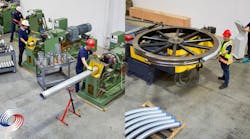Electrical distributors have recently found themselves caught between customers pushing to fast-track long-awaited construction projects and lighting manufacturers forced to stretch out lead times on fixtures due to a widespread shortage of electronic ballasts.
According to distributors, the shortage started to affect shipments in May or June, and seems primarily to affect linear rapid-start electronic ballasts. Manufacturers seem to be affected to varying degrees, and none are eager to talk about it for fear of losing orders.
The impact has fallen harder on large project business, distributors said. Manufacturers seem to have enough product to fill into-stock orders, but quotes on fixtures specified for large construction projects have become a major headache, with delivery times stretching out by 50 percent or even doubling. Distributors said some manufacturers have suspended their “quick-ship” programs due to uncertainties about whether they'll be able to meet demand.
The manufacturers have been mostly silent on the shortage, so many distributors have taken the lead, doing all they can to get the word out to electrical and general contractors that, even on fixtures that usually are available on short notice, purchase orders should be released as early as possible, and that it might be necessary to consider alternative technologies.
The communication coming from distributors contrasts with the communication — or lack of it — that they're getting from their manufacturers, which has many distributors frustrated.
The ballast shortage appears to be related to a global shortage in supply of certain electronic components used not just in ballasts but also in a variety of consumer electronics. The manufacturers of a certain type of capacitors were hard-hit by the recession, which forced some out of business and left the remaining producers with insufficient capacity to satisfy resurgent demand. These companies supply their A-list customers first — major manufacturers of consumer electronics and telecommunications equipment — leaving fewer of the components for smaller customers such as the makers of electronic lighting ballasts.








